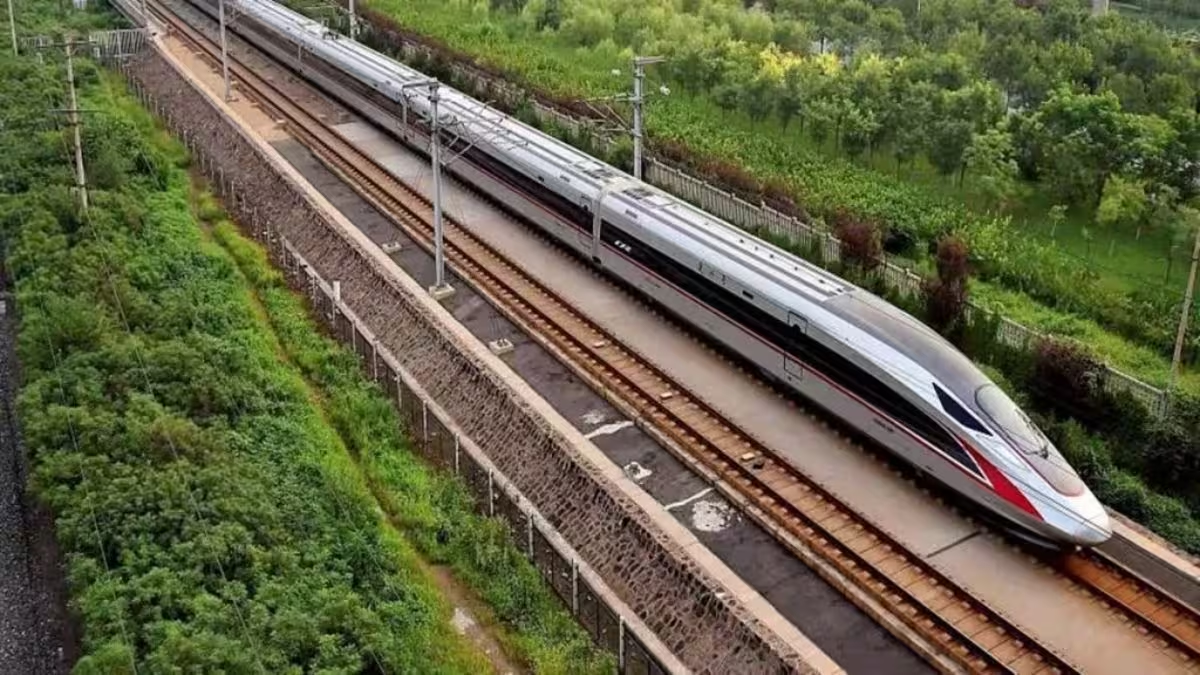Union Budget Allocates ₹4,004 Cr for Mumbai-Ahmedabad Bullet Train, Sparks Confusion Over MUTP Funding
In the Union Budget 2025, the Mumbai-Ahmedabad High-Speed Rail Corridor, popularly known as the Bullet Train project, has secured a significant allocation of ₹4,004.31 crore, reflecting the government’s commitment to advancing India’s first high-speed rail network. However, confusion surrounds the funding for the Mumbai Urban Transport Project (MUTP), with Maharashtra’s top leaders citing conflicting figures.
Maharashtra Chief Minister Devendra Fadnavis announced on X (formerly Twitter) that ₹511.48 crore has been earmarked for MUTP. However, Deputy Chief Minister Ajit Pawar contradicted this claim, stating that the project has received a much larger allocation of ₹1,465.33 crore. The discrepancy has raised eyebrows, with officials refraining from clarifying the situation until the detailed railway budget, known as the “Pink Book,” is officially released. The Mumbai-Ahmedabad Bullet Train project, developed with substantial technical and financial support from Japan, aims to revolutionize intercity travel with trains capable of reaching speeds of up to 320 km/h. The latest budgetary allocation is expected to accelerate critical aspects of the project, including land acquisition, viaduct construction, and station development along the corridor. With the project facing multiple delays due to land acquisition hurdles and environmental concerns, this financial boost could be pivotal in maintaining momentum.
Meanwhile, the MUTP, which focuses on modernising Mumbai’s suburban railway infrastructure—a lifeline for millions of daily commuters—has found itself at the centre of controversy. While the official figure remains unclear, both amounts fall short of expectations, according to transport activists. The funding is intended to support projects like expanding railway lines, modernising ageing stations, and decongesting Mumbai’s overcrowded suburban train network. “The investments reflect the government’s continued push to modernise rail infrastructure in Mumbai, ensuring faster and more efficient urban and intercity travel,” said a senior official. He also highlighted that the allocations could generate employment opportunities and improve connectivity, particularly through the bullet train’s high-speed corridor.
However, not everyone is impressed. Railway activist Mansoor Darvesh voiced the frustrations of many Mumbai residents, stating, “The Budget has disappointed Mumbaikars. No new facilities have been announced for suburban rail users. We expected more comprehensive measures to address the city’s growing commuter demands.” Mumbai’s suburban railway network carries over 7.5 million passengers daily, and demands for modernisation have grown louder with each passing year. The city’s commuters were hoping for new trains, improved signalling systems, and enhanced station amenities—none of which were clearly addressed in the budget announcements.
As the city awaits further clarity from the official budget documents, the contrasting statements from Maharashtra’s top leaders have only fuelled public curiosity and concern. For now, while the bullet train races ahead with solid financial backing, Mumbai’s everyday commuters are left wondering if their pressing needs will ever get the same attention.




